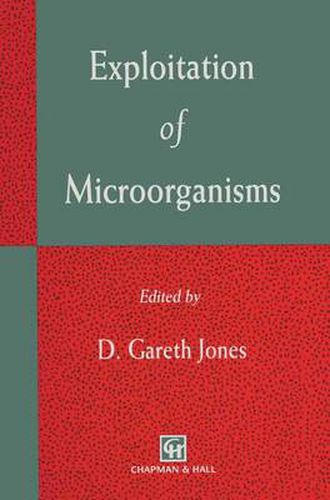Readings Newsletter
Become a Readings Member to make your shopping experience even easier.
Sign in or sign up for free!
You’re not far away from qualifying for FREE standard shipping within Australia
You’ve qualified for FREE standard shipping within Australia
The cart is loading…






This title is printed to order. This book may have been self-published. If so, we cannot guarantee the quality of the content. In the main most books will have gone through the editing process however some may not. We therefore suggest that you be aware of this before ordering this book. If in doubt check either the author or publisher’s details as we are unable to accept any returns unless they are faulty. Please contact us if you have any questions.
Microbiology may be described as one of the younger sciences with its history, as a precise subject, only dating as far back as Pasteur in the mid 1800s and his revelation both of the role of microorganisms in nature and their importance to human welfare. Medical scientists rapidly took up the challenge, with their area of microbiology flourishing and expanding almost in complete isolation from the rest of biology. We now know, of course, that microorganisms have always played an important, if not essential role, in the biosphere with fermented foods and beverages, plant and animal diseases and nutrient cycling foremost in their sphere of activities. Within the last twenty years, microbiology has received two enormous boosts with the developments in microbial genetics and genetic engineering probably being the most influential, and the greater awareness of pollution and environmental sustainability following a close second. In 1990, your editor had the privilege and pleasure of being elected as President of The Association of Applied Biologists in the United King dom and, as the topic for his three-day Presidential Conference, chose ‘The exploitation of microorganisms in applied biology’. This meeting stimu lated great interest in a wide range of subject areas, from weed control to nematology, from plant breeding to plant pathology, from mushrooms to mycorrhiza. The proceedings of this meeting were published in Aspects of Applied Biology, No. 24, 1990.
$9.00 standard shipping within Australia
FREE standard shipping within Australia for orders over $100.00
Express & International shipping calculated at checkout
This title is printed to order. This book may have been self-published. If so, we cannot guarantee the quality of the content. In the main most books will have gone through the editing process however some may not. We therefore suggest that you be aware of this before ordering this book. If in doubt check either the author or publisher’s details as we are unable to accept any returns unless they are faulty. Please contact us if you have any questions.
Microbiology may be described as one of the younger sciences with its history, as a precise subject, only dating as far back as Pasteur in the mid 1800s and his revelation both of the role of microorganisms in nature and their importance to human welfare. Medical scientists rapidly took up the challenge, with their area of microbiology flourishing and expanding almost in complete isolation from the rest of biology. We now know, of course, that microorganisms have always played an important, if not essential role, in the biosphere with fermented foods and beverages, plant and animal diseases and nutrient cycling foremost in their sphere of activities. Within the last twenty years, microbiology has received two enormous boosts with the developments in microbial genetics and genetic engineering probably being the most influential, and the greater awareness of pollution and environmental sustainability following a close second. In 1990, your editor had the privilege and pleasure of being elected as President of The Association of Applied Biologists in the United King dom and, as the topic for his three-day Presidential Conference, chose ‘The exploitation of microorganisms in applied biology’. This meeting stimu lated great interest in a wide range of subject areas, from weed control to nematology, from plant breeding to plant pathology, from mushrooms to mycorrhiza. The proceedings of this meeting were published in Aspects of Applied Biology, No. 24, 1990.